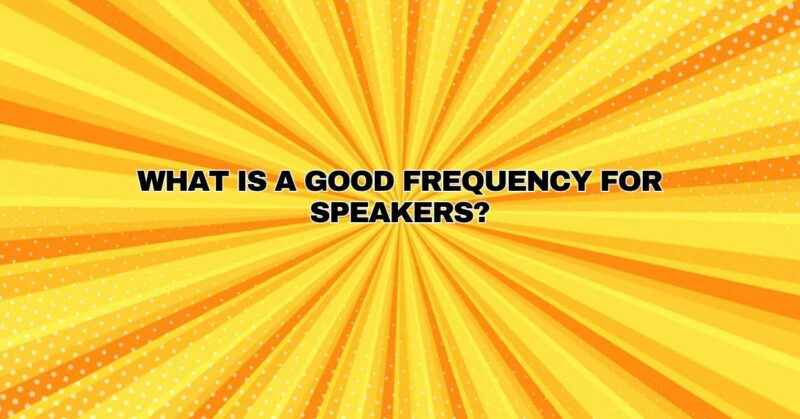Speakers are the gateway to the auditory world, transforming electrical signals into vibrant soundscapes that resonate with our emotions and senses. The question of what constitutes a good frequency for speakers is a fundamental aspect of audio engineering and personal audio preferences. In this comprehensive article, we will delve into the intricacies of speaker frequency response, the factors that define a good frequency range, and how it influences the listening experience.
Understanding Frequency Response
To comprehend the concept of a good frequency for speakers, we must first grasp the notion of frequency response. Frequency response is a measure of a speaker’s ability to reproduce different frequencies accurately across the audible spectrum. It is typically represented as a graph that depicts how a speaker performs at various frequencies, typically measured in Hertz (Hz).
- The Audible Spectrum: The audible spectrum represents the range of frequencies that the human ear can perceive, generally spanning from approximately 20 Hz to 20,000 Hz, with individual variation.
Defining a Good Frequency Range for Speakers
The definition of a good frequency range for speakers is multifaceted and influenced by several factors, including musical preferences, listening environments, and the intended application of the speakers. Here are key considerations when evaluating speaker frequency response:
1. Musical Genres and Content:
- Full Spectrum Reproduction: A good frequency range for speakers should cover the entire audible spectrum. This allows for faithful reproduction of diverse musical genres, from the deep bass of electronic dance music (EDM) to the crisp highs of classical compositions.
- Genre-Specific Considerations: Different musical genres may emphasize certain frequency ranges. For example, rock and pop music benefit from strong midrange presence, while hip-hop and EDM rely heavily on powerful bass frequencies.
2. Listening Environment:
- Room Acoustics: The acoustics of the listening space profoundly impact the perceived frequency response. Proper room treatment, speaker placement, and acoustic design can mitigate issues such as reflections and standing waves.
- Nearfield vs. Farfield: The proximity of the listener to the speakers also influences perceived frequency response. Nearfield listening, where the listener is close to the speakers, can enhance bass perception, while farfield listening may require a more balanced frequency response.
3. Speaker Type and Design:
- Speaker Size: The physical size of the speaker driver affects its ability to reproduce certain frequencies. Larger drivers excel in delivering deep bass, while smaller drivers may emphasize midrange and treble.
- Enclosure Design: Different speaker enclosure designs, such as ported, sealed, or open-back, can impact bass response and overall frequency balance.
4. Speaker Application:
- Home Audio: For home audio and hi-fi setups, a good frequency range typically includes balanced bass, midrange, and treble frequencies to ensure an enjoyable listening experience across a wide range of music.
- Studio Monitors: Studio monitors prioritize accuracy, requiring a flat and neutral frequency response for precise audio mixing and production.
5. Personal Preference:
- Subjective Listening: Ultimately, what constitutes a good frequency range for speakers is a matter of personal preference. Some listeners prefer a warm, bass-heavy sound, while others seek a more analytical and neutral sound signature.
Evaluating Frequency Response Graphs
When assessing speaker specifications, frequency response graphs can provide valuable insights into a speaker’s performance. A flat frequency response graph indicates that the speaker reproduces frequencies evenly across the spectrum, while deviations from flatness reveal areas where the speaker may excel or fall short.
Conclusion
Determining what constitutes a good frequency for speakers is a nuanced process that takes into account various factors, including musical preferences, listening environments, and speaker capabilities. A good frequency range for speakers should encompass the full audible spectrum, allowing for faithful reproduction of diverse musical content. Whether you prioritize deep bass for cinematic experiences or a neutral and balanced sound for critical listening, the quest for the perfect frequency range is a dynamic journey that resonates with each individual’s unique audio sensibilities.


